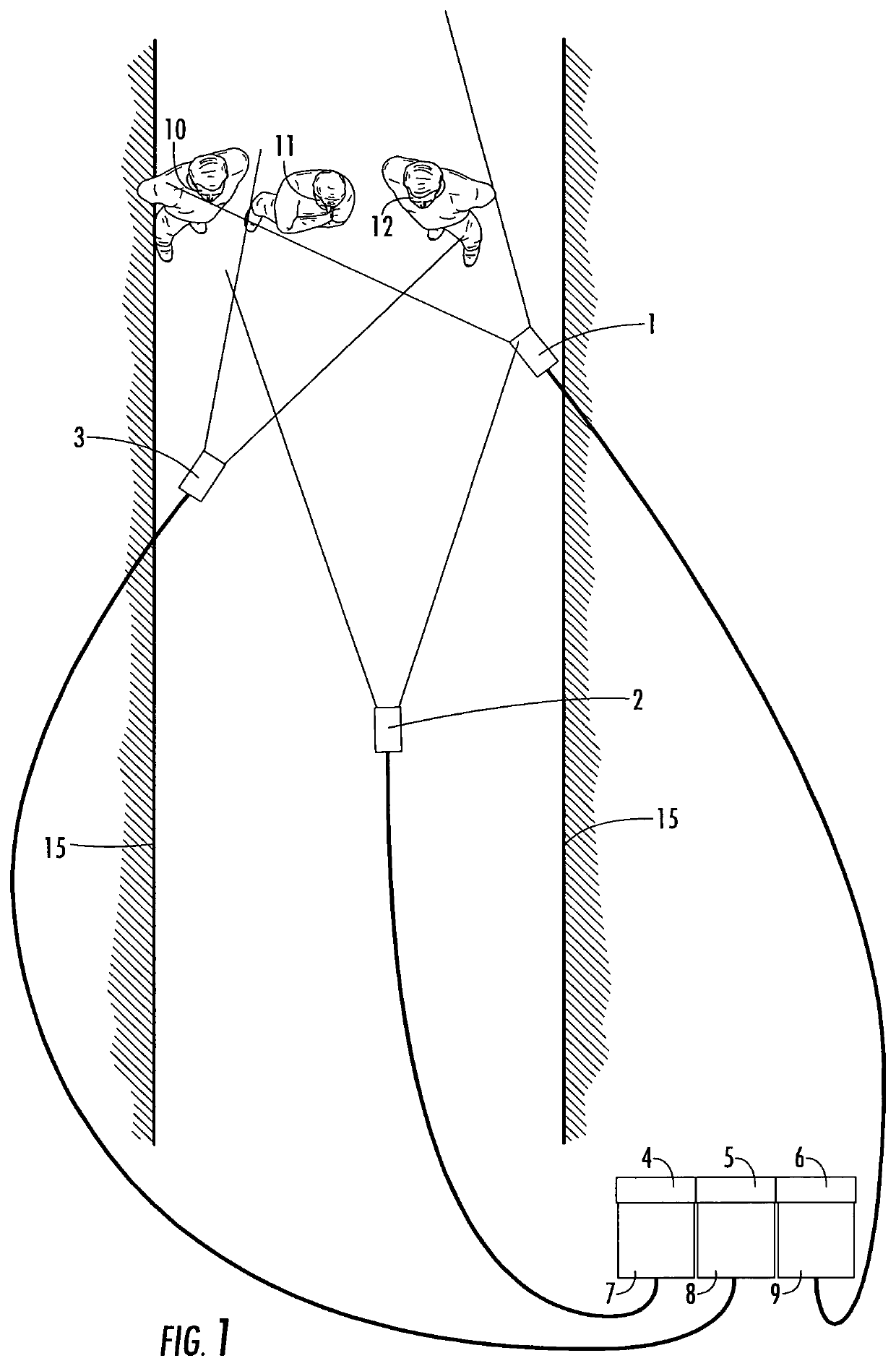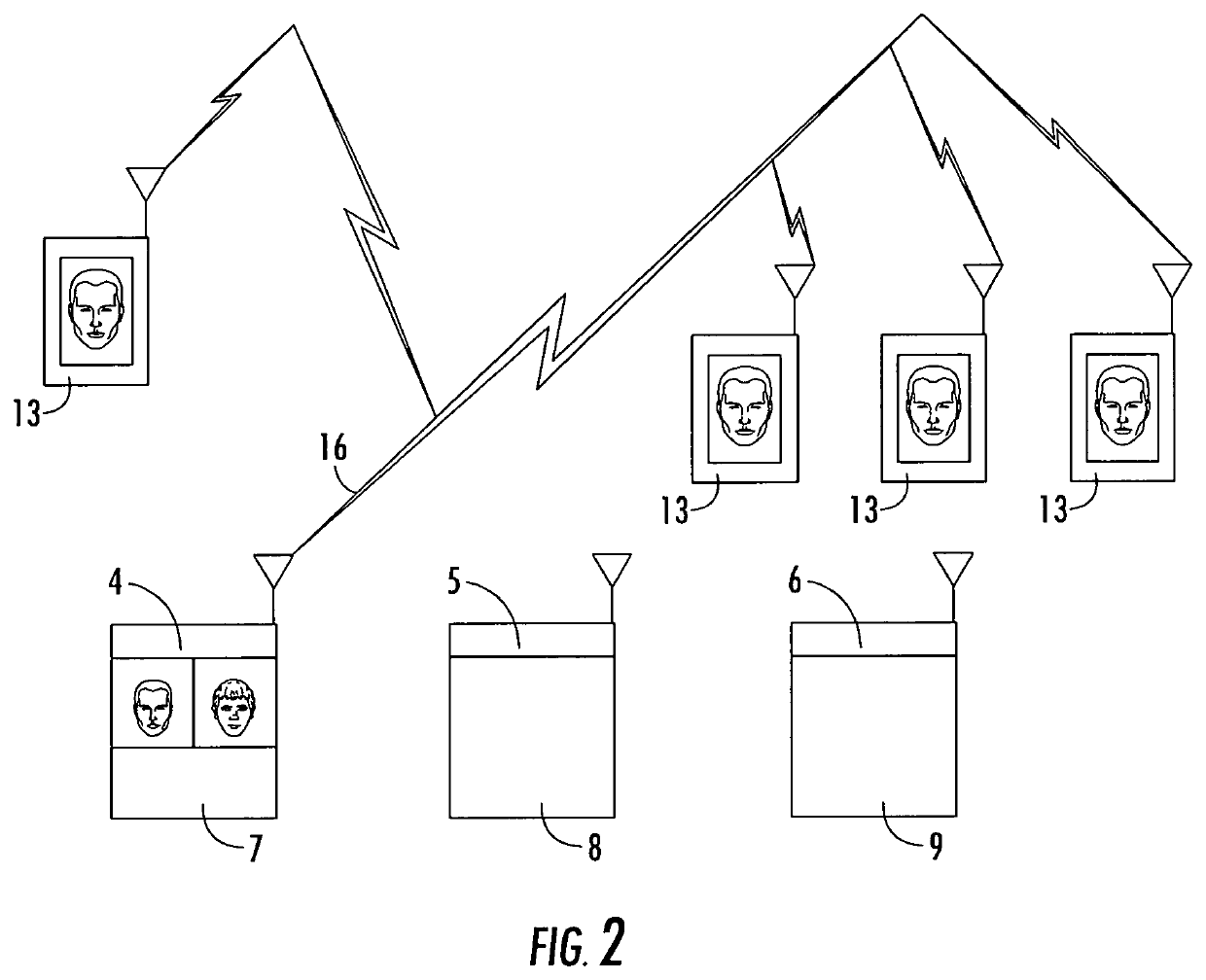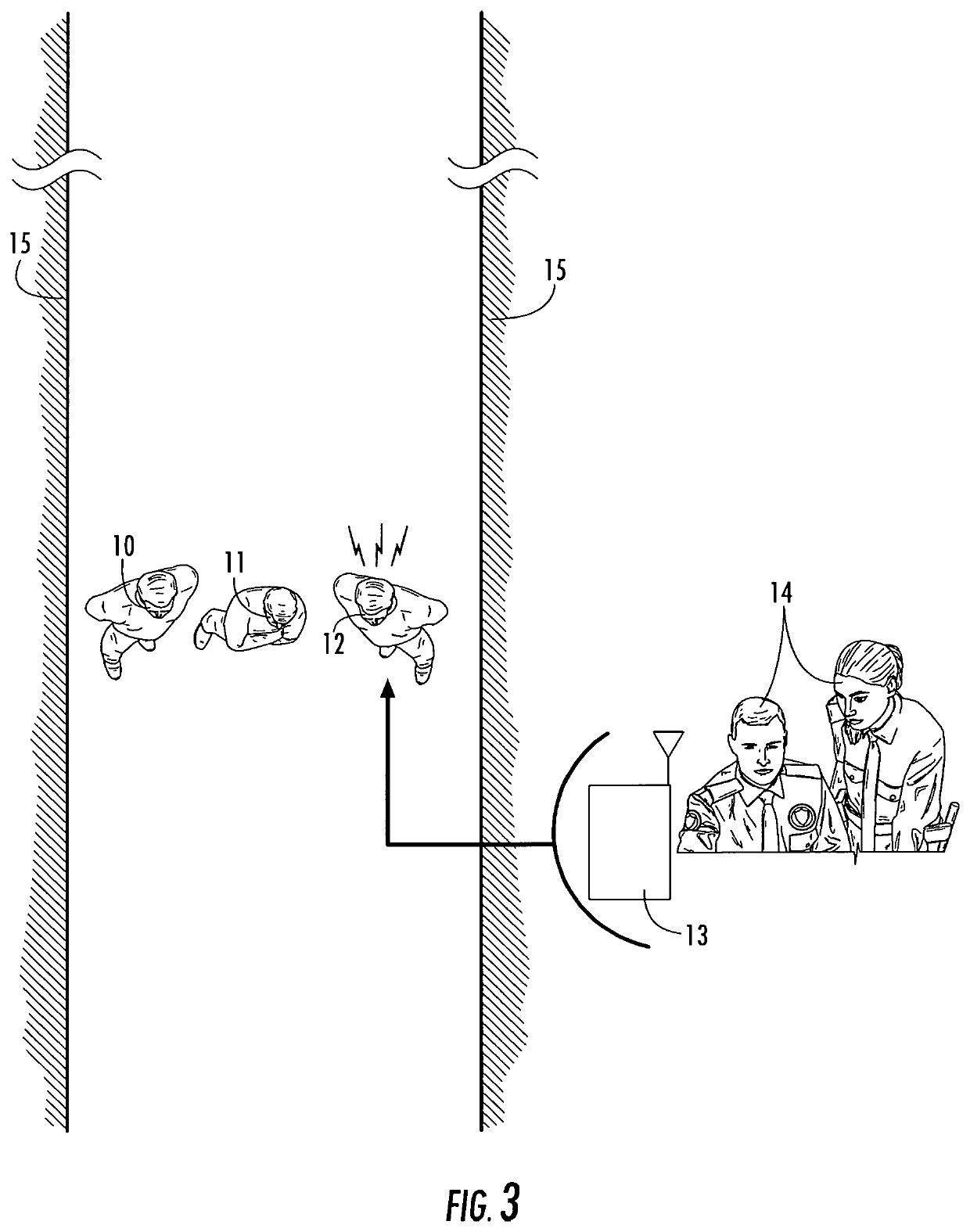Video alert and secondary verification system and method
a secondary verification and video alert technology, applied in the field of video cameras and face matching systems, can solve the problems of numerous false matches, video cameras that do not achieve high-quality photos, etc., and achieve the effect of improving the accuracy of autonomous operation, high matching accuracy, and high similarity threshold
- Summary
- Abstract
- Description
- Claims
- Application Information
AI Technical Summary
Benefits of technology
Problems solved by technology
Method used
Image
Examples
Embodiment Construction
[0030]FIG. 1 depicts three video alert cameras 1, 2, 3 configured in an access way 15. Connected to the video alert cameras are three independent computers 4, 5, 6 and three independent displays 7, 8, 9. Camera 1, module 9, and computer 6 comprise one video alert module. These modules function independently with the objective of staring at the access way, conducting face recognition, and once a facial recognition match is achieved above a threshold, the image of the match will be displayed on the respective video screen 7, 8, 9 linked to the respective video cameras 1, 2, 3. In order to assist the system operator, the video screens would only illuminate when there is a match which meets or exceeds the set facial match threshold. The alert can be the photo appearing on the screen, an audible or visual alert, or other methods to alert the system monitor to look at the screen. Individuals 10, 11, 12 walking through the access way 15 would have their face acquired overtly or covertly, b...
PUM
 Login to View More
Login to View More Abstract
Description
Claims
Application Information
 Login to View More
Login to View More - R&D
- Intellectual Property
- Life Sciences
- Materials
- Tech Scout
- Unparalleled Data Quality
- Higher Quality Content
- 60% Fewer Hallucinations
Browse by: Latest US Patents, China's latest patents, Technical Efficacy Thesaurus, Application Domain, Technology Topic, Popular Technical Reports.
© 2025 PatSnap. All rights reserved.Legal|Privacy policy|Modern Slavery Act Transparency Statement|Sitemap|About US| Contact US: help@patsnap.com



